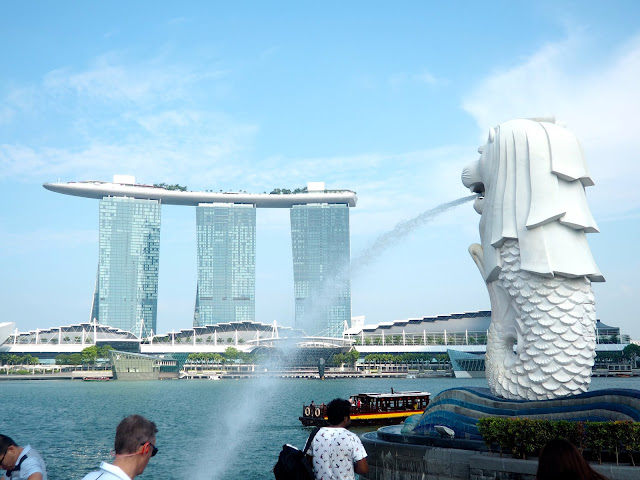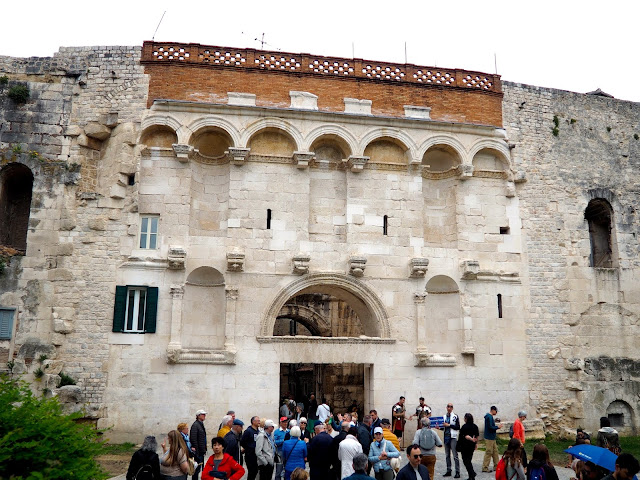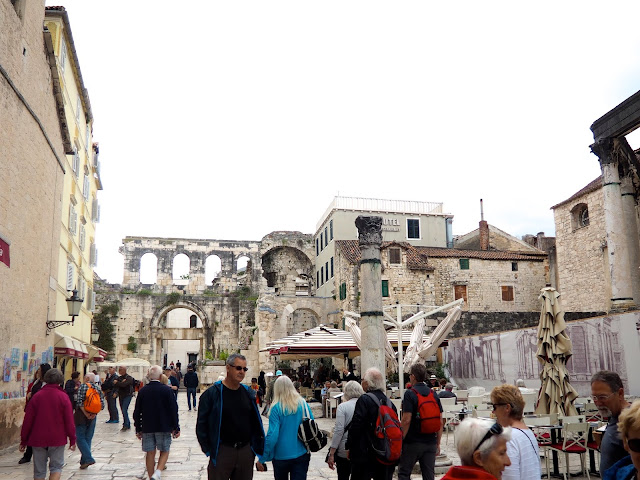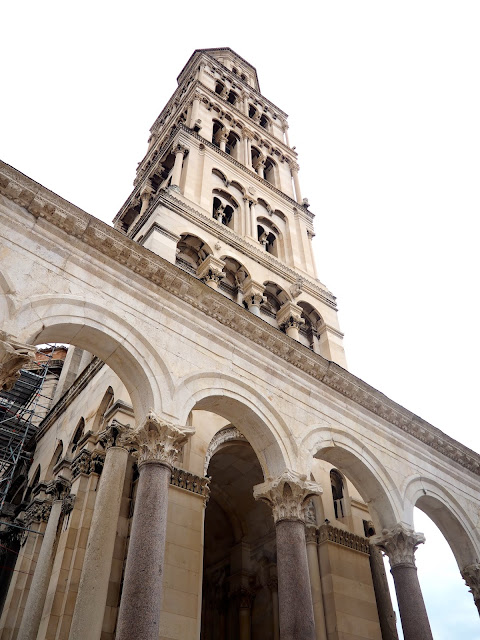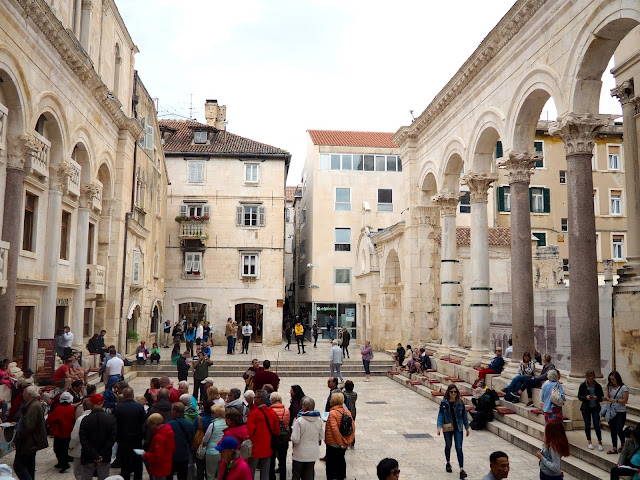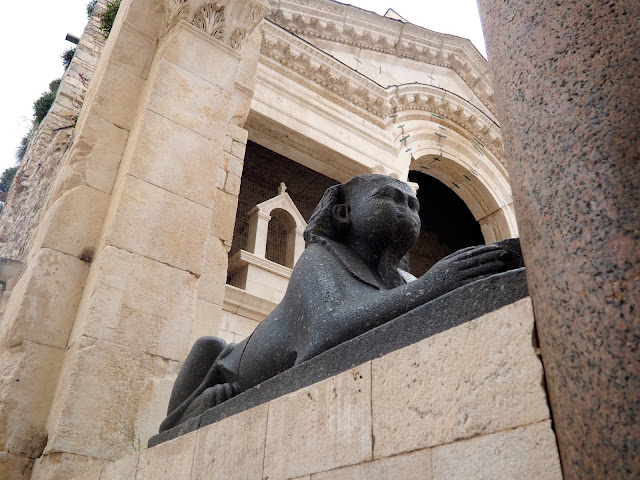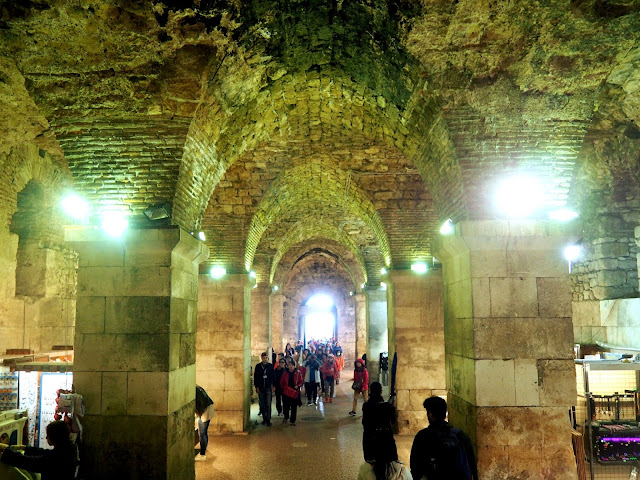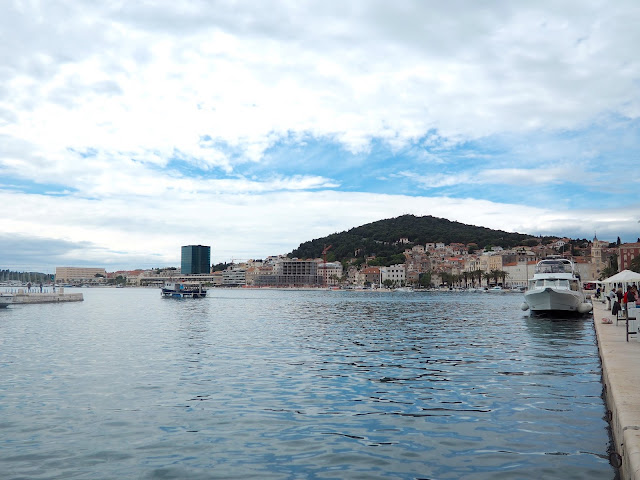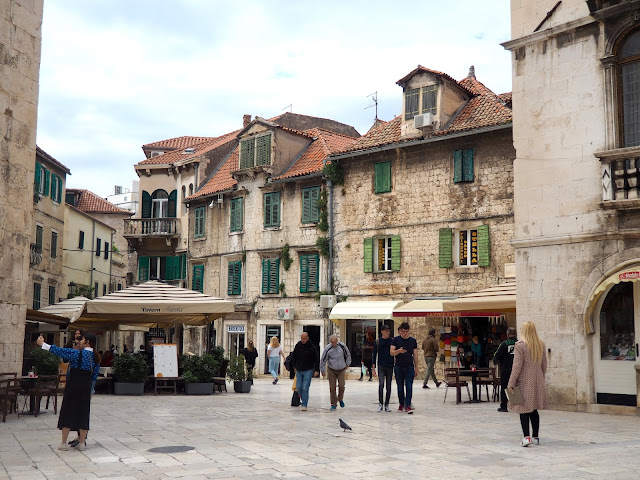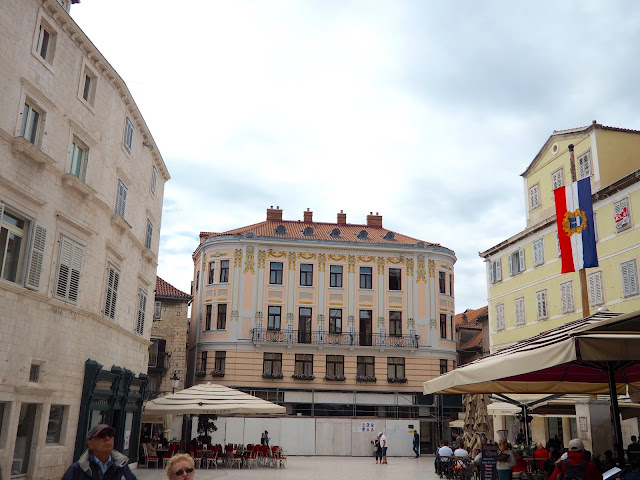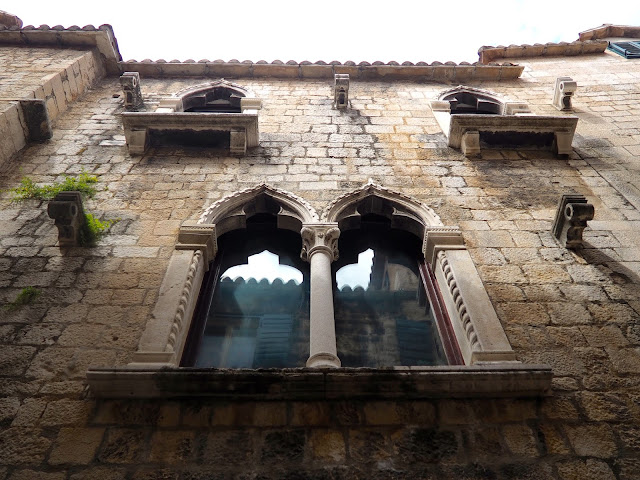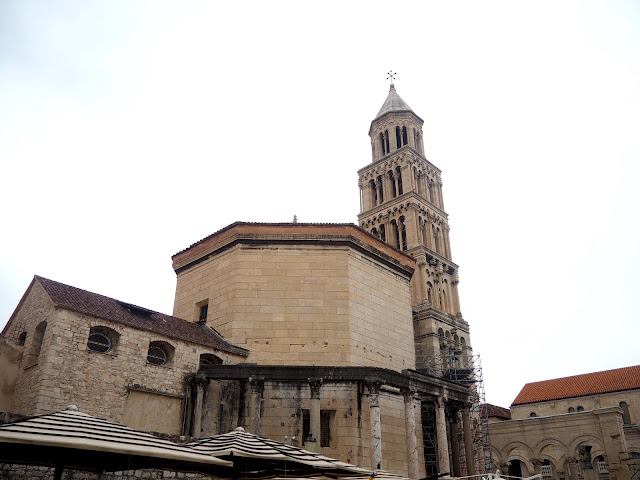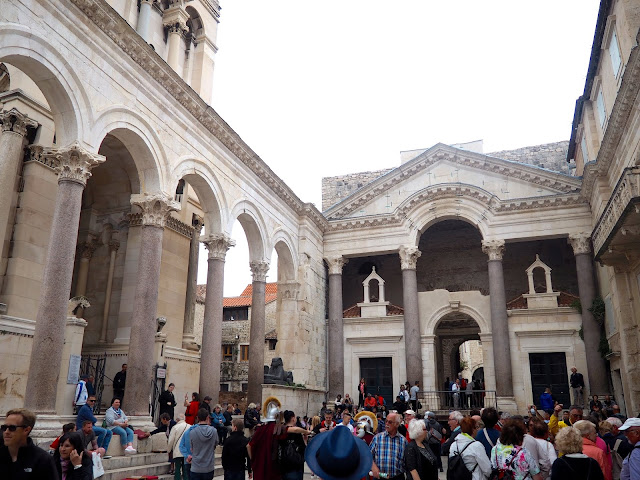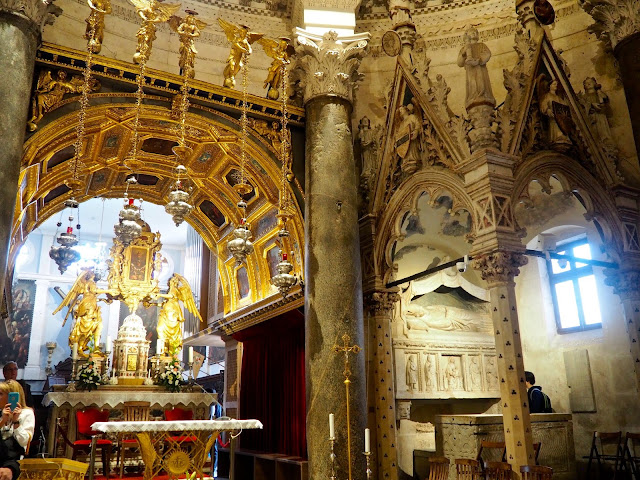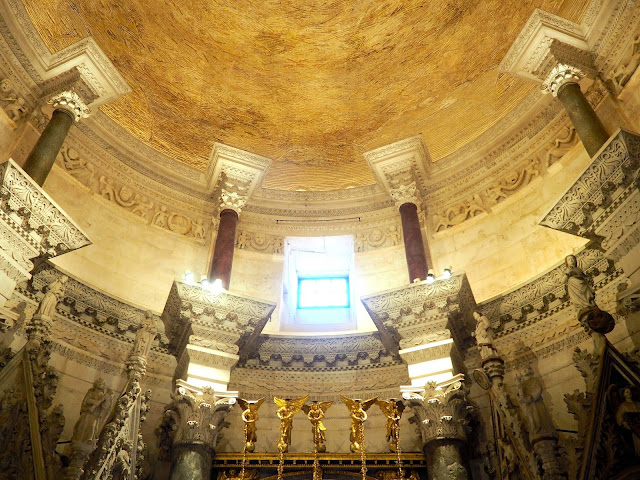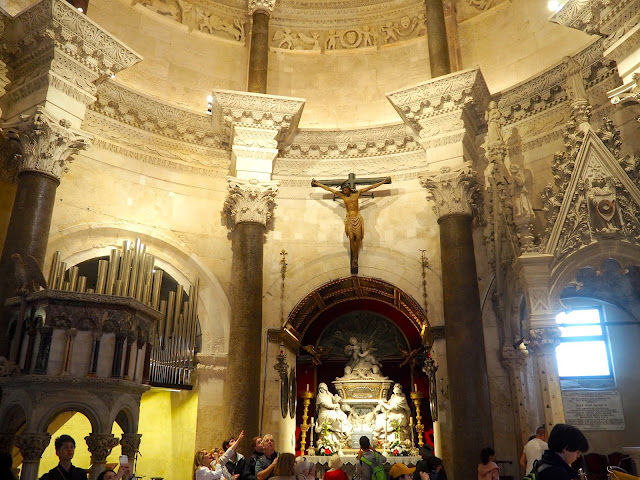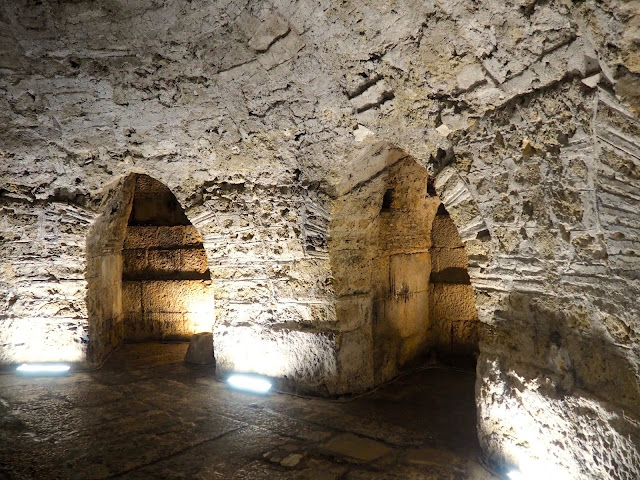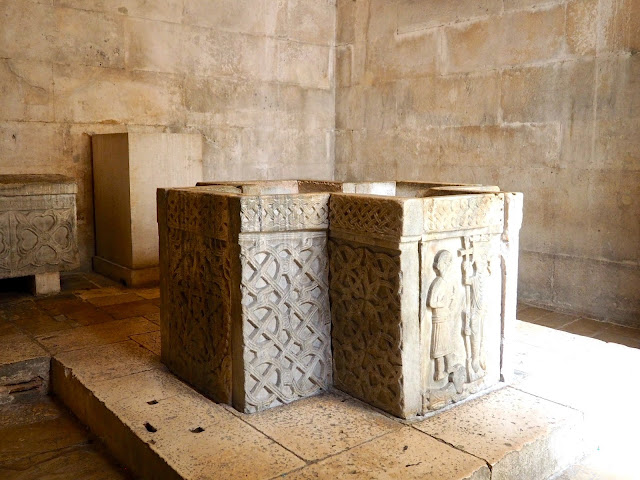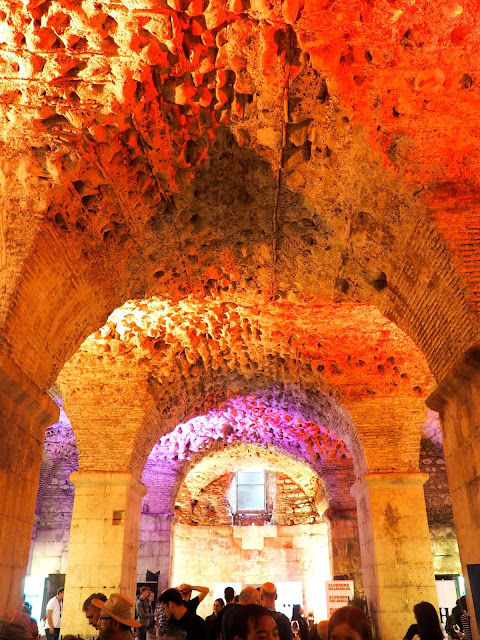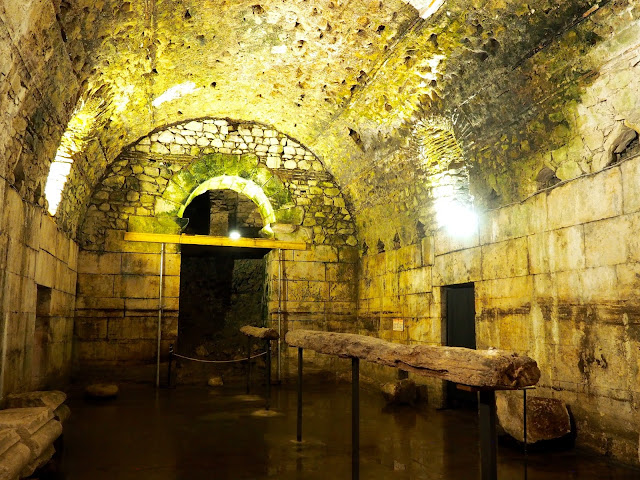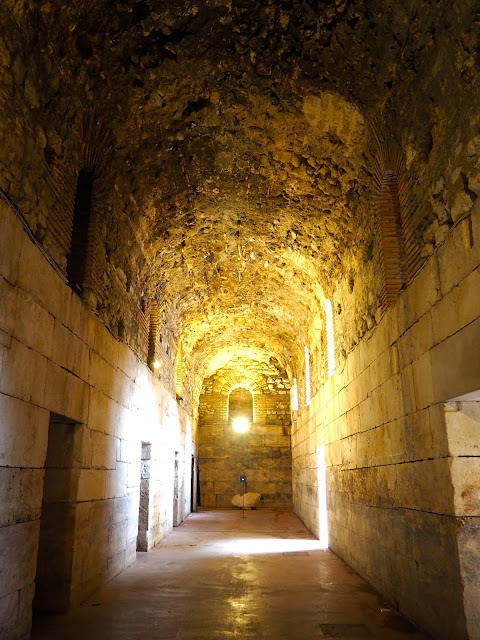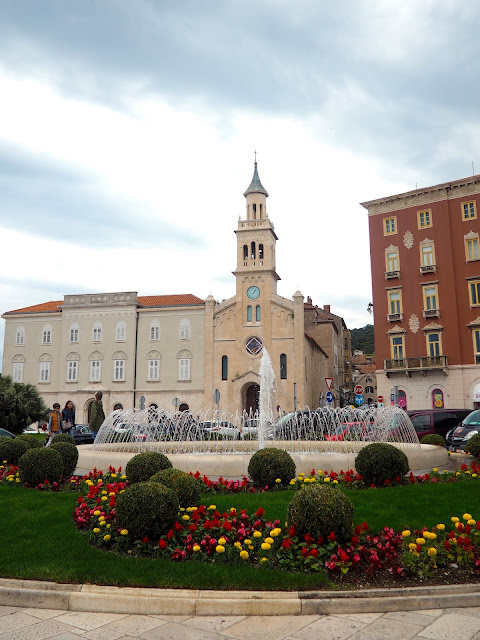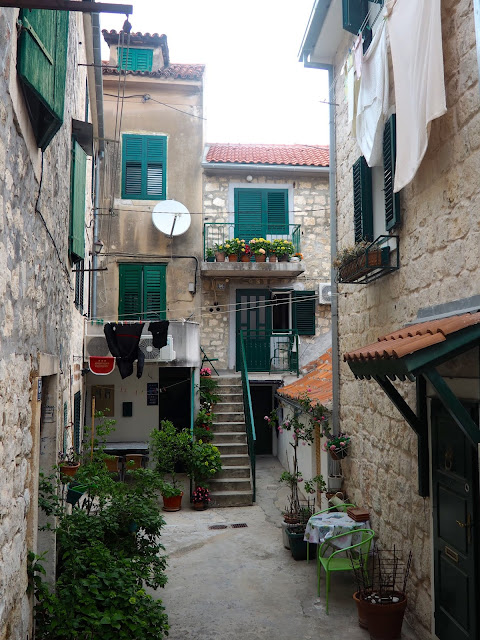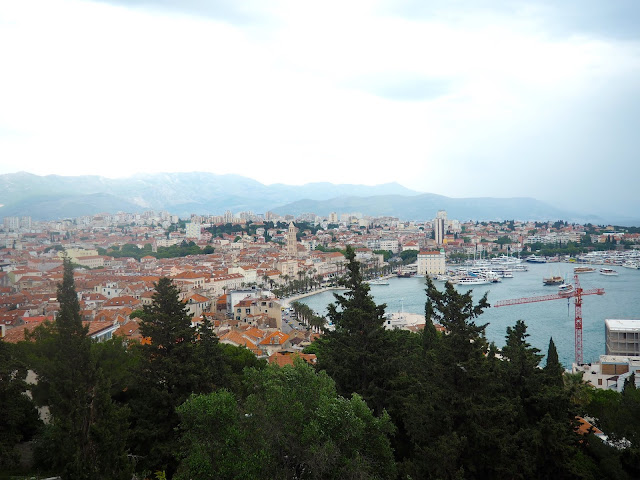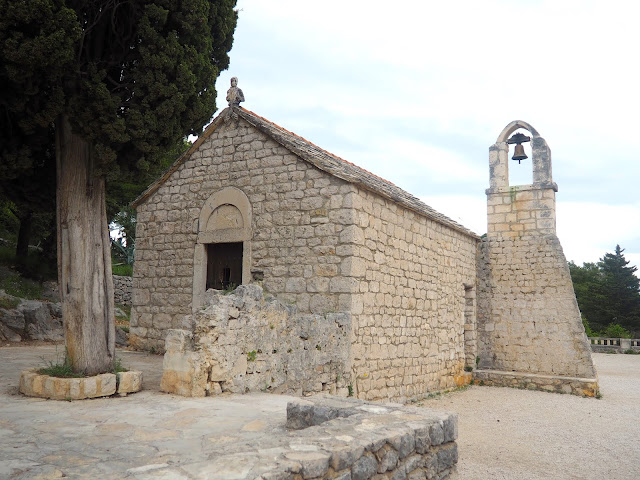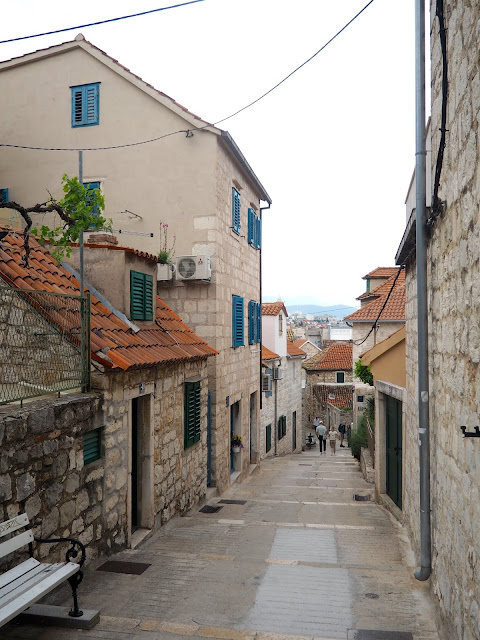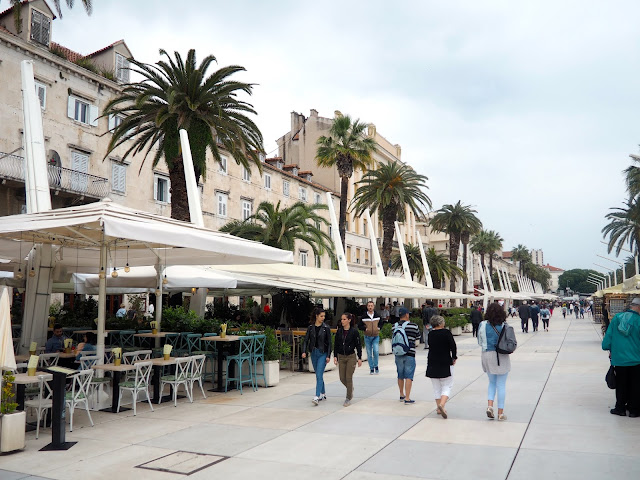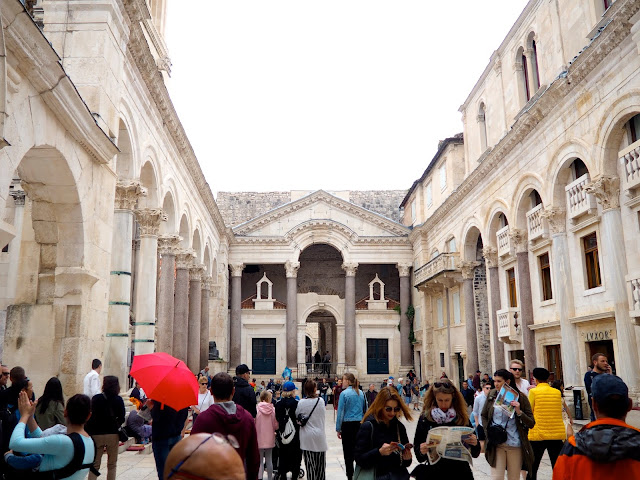
2 Days in Split | Croatia
We’re at the last of my posts about my week in Croatia now! My time in Split was actually a little spread out, as I was there for four nights in total. I arrived around midday after taking the 4 hour bus ride from Dubrovnik, and so had that afternoon to look around. Then I spent the next two days out of the city, on day trips around the area to Plitvice Lakes and the Dalmatian Coast islands. So then I had still had one more full day in the city before leaving to return home. That was definitely the right amount of time in my opinion, as any longer in the city itself and I would’ve gotten bored and been running out of things to do, especially as the weather was pretty overcast.
Day One – Walking Tour & Diocletian’s Palace
So starting off the afternoon I arrived, I first of all checked into the apartment and dropped my suitcase off, then headed out to explore again. I wanted to start off with the walking tour, as that’s usually a good way to get an introduction and your bearings on a city, and figure out you want to go back and visit again later. It was a bit of a dash for me to get there on time, but if I missed it then the next wasn’t until late in the evening, so I made it work! Like Dubrovnik, there wasn’t the option of a free tour, like those I guide back home, so I had to pay upfront. Honestly, at about €20 I though it was a bit pricey, but there wasn’t really any other option, aside from not doing it at all. It was a 2 hour tour though, and our guide turned out to be an archaeologist and so was very knowledgable! Croatian guides have to do training and tests to get their licenses too, whereas free tour guides like myself are typically self-taught and don’t need licenses.
Anyways, the tour started by the Golden Gate, on the north side of Diocletian’s Palace. This is a really important thing to know about Split – the oldest part of the city is actually a Roman palace, from the early 4th century, and one of the best-preserved anywhere! Diocletian was a Dalmatia native, who went on to become Emperor of Rome, before retiring back home and building this palace. But it wasn’t just home to Diocletian – inside the walls was basically a small town, which continued to exist even after his death. New walls and buildings have appeared inside the city wall over the years, and it has been continuously occupied. Eventually of course, it was too crowded and the city grew beyond the palace walls, into what Split is today. So the first hour and fifteen minutes of the tour was spent on the palace itself, before branching out to other areas. We started with an introduction to Diocletian and how Split was created, before heading inside the gates to explore the narrow streets – and I do mean narrow, some of them are truly tiny! Many were once wider during Roman times, but buildings have been added and expanded since then.
We continued towards the Silver Gate, the eastern entrance, and here you can see clearly how wide the street used to be. Next to us was Saint Domnius Cathedral, whose bell tower is the highest thing in the palace. Part of the church was originally Diocletian’s mausoleum, the octagonal structure at the back. However, his tomb was destroyed in the 5th century and replaced with the relics of Saint Domnius (now patron saint of Split), and they changed the tomb into a church instead. Diocletian persecuted Christians, including Domnius, who was martyred as a result, so it’s all a bit ironic really! The cathedral looks on to Peristyle Square, in the centre of the palace. This really does look like something straight out of Roman, with columns and arches lining the square – they even have people dressed in Roman costumes! The guide also pointed out the sphinx statue, brought here by Diocletian from Egypt – this is the best preserved, as there are a dozen others round the city, which were damaged by Christians as ‘pagan’ icons.
We continued up into the Vestibulum, a round open-topped structure, which was once the entrance to Diocletian’s apartments. Now, it has perfect acoustics, so the traditional ‘klapa’ singers, a form of a cappella singing, perform here for the tour groups and sell their CDs. Beyond, what remains of the imperial apartments now house the city’s ethnography museum. We delved into some of the back streets – where many people do still live full time, this isn’t just full of tourists! – and passed through the ‘Let Me Pass’ street, which has to be a single file squeeze between buildings. This brought us to the Temple of Jupiter, the leader of the Roman gods, who citizens would have regularly come to worship during Diocletian’s time. It is now officially the Baptistery of St John, rededicated when Christianity came to the area. It’s squeezed into such a small space between streets that it’s near impossible to take photos from outside, as you can’t get far enough back to fit the whole thing into your shot! We explored a few more of the side streets, and the triclinium, the remnants of a large (presumed) dining hall, once part of the imperial apartments.
We returned to Peristyle Square, then headed underground to the palace basements (the palace is not built on level ground, so basements created an even ground level). The central hall is now full of gift and souvenir stalls to browse, while the rest of the basements require a ticket to enter – more on that later! The guide did mention that this was another Game of Thrones filming location – Split was used for scenes in Meereen, and the basements are where Daenerys has her throne room, and where she chained up her dragons. We walked through the basement, and emerged through the Brass Gate on the south side.
At this point, those who had only paid for the palace tour left the group, and half of us continued after a quick break. We were on the Riva promenade now, next to the harbour and the many boats moored there, everything from small speedboats to huge cruise ships. The guide showed us where the west edge of the palace is, which is a little hard to spot, as the rest of the town just sprawls out from the edge (the other three sides are clearer). We delved back into those streets, which are an unusual collection of architectural styles, being from several time periods, including Baroque, Venetian, and Renaissance. We passed through Fruit Square first, with its tall Venetian tower, and a statue of Marko Marulič, the father of Croatian literature. Further on we reached People’s Square, or Pjaca as it is typically known, which seems to have a building in almost every style! This became the city’s main square, instead of Peristyle, when they expanded beyond the palace walls, and is now a lively area full of shops and cafés.
We headed back down the narrow side streets again, and at some point crossed back inside the palace, but not through the western Iron Gate. We simply walked down a nondescript street and were informed we’d crossed through by the guide, but here, the city all merges together. This was actually also once the Jewish quarter, and there’s a small synagogue tucked in on the street leading back into the palace. She continued to lead us down a few more streets, stopping to point out the townhouses built by wealthy families, the architectural features (lots of Venetian windows), and the entrance to the tiny church hidden above the Golden Gate. Eventually, the tour finished not too far from where we started.
There was certainly a lot of history and information crammed in – I’ve definitely forgotten some of it by now! – and the guide was clearly very knowledgable. I was glad I did the tour, as I felt I now had a better understanding of what I was looking at when I went back to explore more myself later. I didn’t anything particularly significant with what remained of the afternoon – I had been up since about 6am to catch the bus, and then more or less come straight to the tour so I was pretty tired! The tour had also shown me that the old town area of Split isn’t that big (the city is fairly big overall, but much of it you don’t really need to go see as a tourist, as is the case in most big cities), so I’d have plenty of time to explore it again on my second day. Plus, I knew I had early starts for my trips over the next two days. I wandered around a little more, got some food, and then headed back to the rest in the apartment.
Day Two – Sightseeing & Marjan Hill
Anyways, I headed into Saint Domnius Cathedral first of all, buying the combination ticket that included entry to the crypt and Temple of Jupiter as well. The bell tower is one of the most popular sights in Split, climbing to the top to admire the views, but it was closed for renovation during my trip. I headed into the main room, which was surprisingly small given how large the building seemed from the outside. It was richly decorated though, with intricate stone carvings, rich golden ornaments, and collection of paintings, as well as a relief of Christ on the cross, and the organ in one corner. I looked around for quite a while, as there was always another corner catching my eye, with more details to examine! You exit out the front, back to Peristyle Square, but I quickly looped around the building again to the crypt entrance. There isn’t that much to see down here, a low ceilinged, circular room, with niches around the walls, but it’s also now a chapel dedicated to St Lucy, with a small statue of her on the table.
I crossed back over the square after that, to the Temple of Jupiter, the last thing included on the combo ticket. It’s now the Baptistery of St John, but the Roman-era relief work has been well preserved, though the columns are missing from the front now. It was pretty crowded when I first went in, with a tour group there, so I waited in a corner for it to empty out again to take my photos – it was raining anyway so I was in no rush! The font takes up the centre of the room, with carvings around the sides of it, while sarcophagi containing the remains of Archbishops are situated in the back. It’s an interesting mix of the Roman and Christian faiths present here!
The other attraction I then wanted to buy a ticket for was the basements of Diocletian’s Palace, the empty sections on either side of the central hallway, which is now crowded full of souvenir stalls. It actually turned out that the western half was hosting a wine festival that weekend, so there were still stalls taking up many of those halls as well! But others were still empty, as was the eastern section. They’ve spent years slowly opening up more chambers to the public as well, with only a few remaining closed now. I realised it would potentially be easy to get a little lost in here, but thankfully there are maps on the walls, as well as information signs dotted around. The cellars supported the imperial apartments above, as the palace is built on land sloping down to the sea. Much of the apartments above are now gone, but the basements have allowed archaeologists to understand what the floor plan likely was, and have found rubbish thrown down here from other inhabitants of Split over the centuries, which give clues about their lives. I spent a while just roaming around down here, especially the eastern half, which was blessedly calm and quiet compared to the crowded streets above.
When I emerged above ground again, I began to make my way west, intending to wind up at Marjan Hill eventually, but I took my time getting there. I didn’t pick any specific route, but just wandered trough the streets, both in and outside the palace walls, taking photos and exploring the architecture along the way. I passed through some of the same areas from the walking tour, but also encountered plenty of new streets I hadn’t seen yet. It’s all so narrow and winding that you can spend ages in just one little area without ever repeating your own steps. I browsed a few shops along the way as well – picking up some new earrings, as I often do when travelling.
The are west of the old town is Varoš, much of which is taken up by Marjan Hill and Park. Before the park though, I passed through more little streets, these ones quieter and less crowded than the tourist-filled old town area. There were restaurants and apartments here as well, of course, but it had more of a village feel to it, with locals just going about their daily lives. I climbed up a street of stairs, taking my time in this picturesque area, and remembering the guide from the walking tour mentioning this area as well, as a good escape from the busy palace.
Soon the houses gave way to the park, an entire forest growing on the hillside. There are various walking routes you can take through here, and I headed towards the south side first, hoping to get sea views as I ascended the hill. There was a restaurant with a balcony area that I cam across quite quickly, from which you could get a pretty good view over Split, including the palace and the harbour area, though it was partially obscured by trees. The path was pretty much a straight slope upwards, so nothing too difficult, though I did stop for a few breaks, more just because I had plenty of time on my hands, rather than because I was physically tired. I passed a small church building, very picturesque, then started to veer right when I reached the next fork in the path, as I realised I was no longer climbing any higher. This was the right course, as going straight would have taken me around the hill, not up it. I soon reached the lower summit, a forest area with a children’s playground, a small amphitheatre, and the remnants of the zoo and botanic gardens, which have now been abandoned.
I then hit the stairs, the last flight that would take me to the very summit of Marjan Hill, where a huge Croatian flag blew in the wind – seriously, the weather wasn’t on my side that day! It was dry, yes, but pretty cool in the strong sea winds coming in, as well as being so grey and overcast. At the top, I was a little disappointed that the view wasn’t any better than from the first viewpoint, at the balcony, as much of the hill itself blocked the city from sight. I was able to see some of the nearby islands in the Adriatic Sea, as well as across to other parts of the mainland (Split is at the tip of a peninsula). My intention was then to go down the other side of the hill and walk around the coast back towards the city, but all the paths leading that way were roped off. I was forced to go back the way I’d come more or less, though I found some other paths heading down, just to make things slightly different.
Had the weather been better, I’d hoped to go to a beach in the area – possibly Kasjuni or Kastelet, both on the southern coast of Marjan Hill – to relax and soak in some sun on my last afternoon in Croatia. But on such a cool, cloudy day, there seemed little point, and the paths had already forced me back in the direction of the old town anyway. I walked back along the Riva Promenade, lined with palm, trees, souvenir stalls, and restaurants looking out towards the harbour. I picked up my Split magnet from a stand (I collect them whenever I travel!), before slowly winding my way back towards my apartment.
I did enjoy Split, especially exploring Diocletian’s Palace, and I’m glad I did the walking tour to understand some of the history here. It’s an interesting city to just roam around in, with so many narrow streets to discover. But I’m also glad I wasn’t staying for any longer, as I was starting to get a little bored by the end of the second day. The weather didn’t help, limiting my options somewhat, but I was running out of other things to do anyways. I’m happy I booked enough time here for the day trips though, as there’s certainly plenty to see in the region around the city too! The next morning, I headed to the airport for my flight home again. I enjoyed Croatia overall, especially in terms of its history and architecture and sights. I probably would have enjoyed it more in sunny weather, as I could have spent more time outside relaxing in beautiful locations, instead of hiding from the rain – which was unusual for that time of year anyway! – but I tried to make the best of the time I had and still enjoyed myself overall!
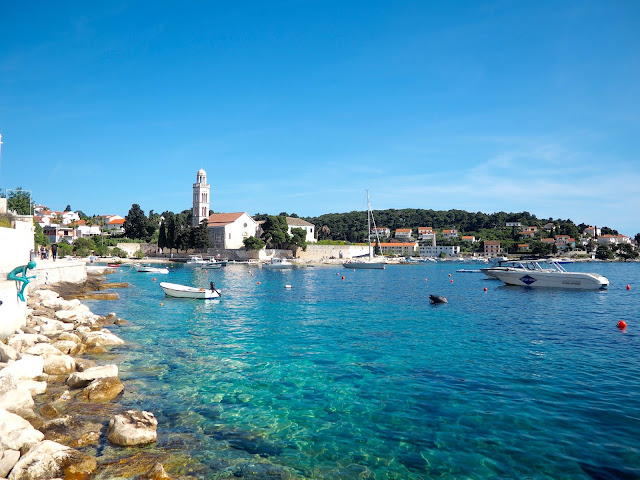
Dalmatian Coast Islands | Croatia
You May Also Like

Junk Boat Party | Hong Kong
18 May 2016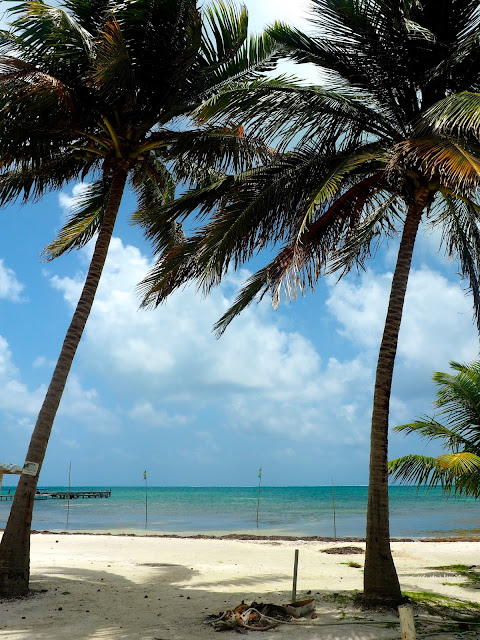
Travel Inspiration – Belize
13 April 2016